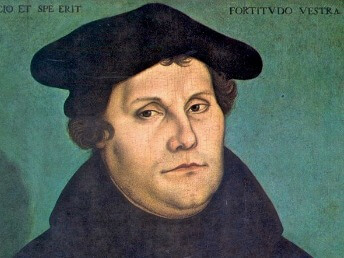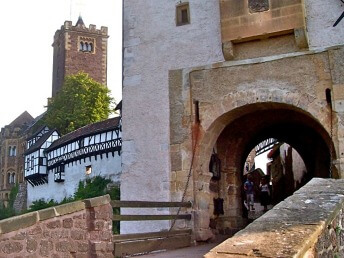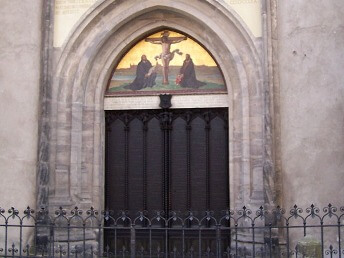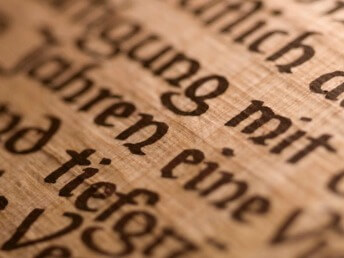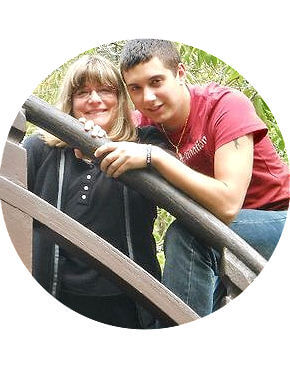- Home
- Martin Luther
- Wittenberg
Wittenberg
Martin Luther and the 95 Theses
This sleepy little town in rural eastern Germany doesn't look like the center of a revolution. But the events that played out here in the 16th Century shook the foundations of Christendom.
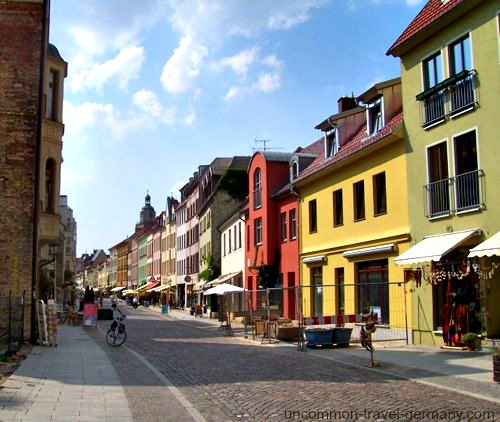 Wittenberg, Collegienstrasse
Wittenberg, CollegienstrasseIt was here in Wittenberg, Germany, that Martin Luther lived and preached, and on October 31, 1517, he nailed his 95 Theses to the door of the Castle Church. The Protestant Reformation had begun.
Visitors come here from all over the world to see the places where these historic events took place. This could be a good day trip from Berlin; it's about one hour on the IC train. But to see everything without having to rush, I would recommend spending at least one night here.
What to See in Wittenberg
For such a small town, there is a lot to see:
- The town itself. A charming collection of 16th Century houses and a striking market square.
- The Castle Church. It was on the doors of this impressive church that (allegedly) Martin Luther nailed his 95 Theses. Luther's grave is inside.
- The Town Church. Another beautiful Medieval church where Luther preached many sermons.
- Luther's Residence. Martin Luther lived in this converted cloister with his family for many years. Now a museum.
- The Oak Tree planted where Luther burned the Papal Bull.
- Lucas Cranach's Home and art studio. This artist documented much of the Reformation with his portraits and woodcuts.
Other things to see:
- The Castle Museum, in the castle part of the Castle Church building. History of Wittenberg, from prehistoric times through the middle ages and later as a Prussian garrison town.
- Philip Melanchthon's House, on Collegienstrasse. Luther's friend and fellow theologian, who contributed enormously to Lutheran doctrine.
- An East German nostalgia museum, Haus der Geschichte, on Schlossstrasse. Rooms furnished in '50s, '60s and '70s DDR style.
- An interesting second-hand shop on Mittelstrasse, crammed with German Army items, WWI to the present.
The town's official name is Lutherstadt-Wittenberg, and this is definitely Martin Luther Central! Everywhere you turn, there's a spot associated with Martin Luther's life.
The shops carry everything you could imagine associated with their most famous resident: books, posters, mugs, statues...even Martin Luther socks! In spite of that, it's really a pleasant little town and crammed with interesting history.
Martin Luther socks. People have been asking about the Martin Luther socks with "Here I stand" on them. You can find them online from these companies:
English version:
German version (Hier stehe ich):
I haven't heard any feedback about these yet.
The Town of Wittenberg
Wittenberg is designed for easy walking. The old town is long and narrow, and flat, laid out along two parallel streets: pedestrian-only Collegienstrasse (which turns into Schlossstrasse), and Mittelstrasse.
Most of the historical sights are along Collegienstrasse and Schlossstrasse.
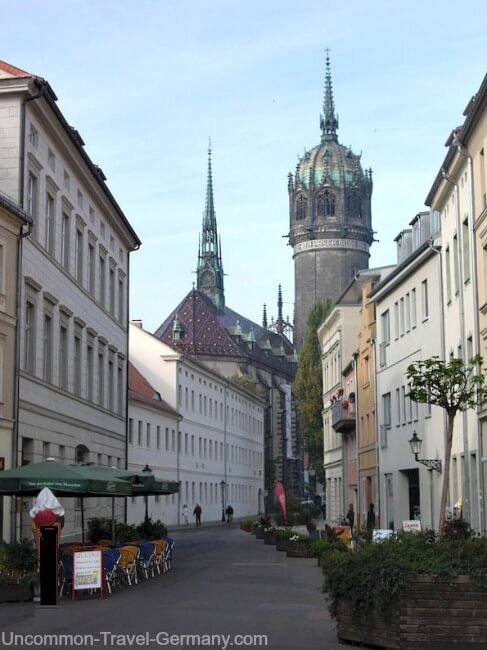 Castle Church at end of Schlossstrasse
Castle Church at end of SchlossstrasseA stream runs along the main street, partially underground. Half way along, the street opens out into an attractive square, or Markt, with a statues of Martin Luther and Philip Melanchthon.
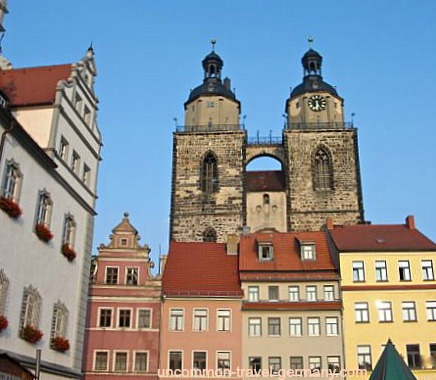 Main Square, Town Church Towers
Main Square, Town Church TowersPretty pastel-colored buildings, many from the 16th and 17th centuries, line the streets and there are a number of inviting restaurants serving hearty German cooking. During warmer weather, many of the restaurants have tables on the sidewalk, great for relaxing and people-watching.
The Tourist Information Office is located at the western end of Schlossstrasse across the street from the Castle Church. You can get maps of the town, as well as information on all the local activities.
This is a good pace to book a hotel if you don't have reservations. Open daily (except in winter). They also have a smaller office in front of the train station with more limited hours (closed Saturday afternoons and Sundays). www.wittenberg-information.de.
Castle Church
This is the famous church where Martin Luther nailed his 95 Theses to the door. Luther gave some of his sermons in this church and now is buried just under the pulpit.
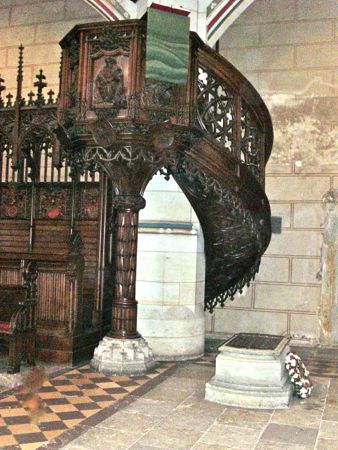 Martin Luther's Grave
Martin Luther's GraveThe church was severely damaged twice during wars in the centuries following the Reformation, but it was rebuilt each time.
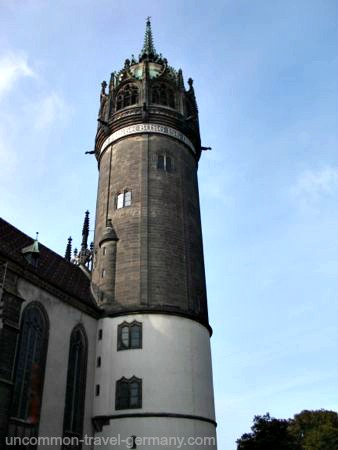 The Castle Church Tower
The Castle Church TowerThe doors you see now were put up in the 19th century (the original wooden doors are long gone, with the Middle Ages). The current doors are made of bronze and are engraved with all ninety-five theses.
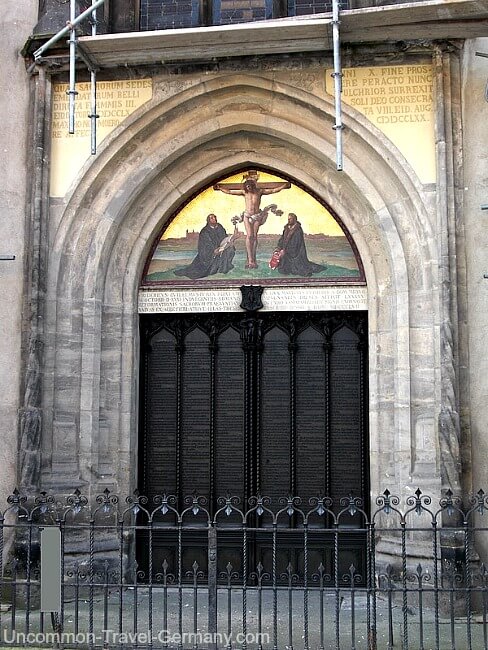 Doors of the Castle Church
Doors of the Castle Church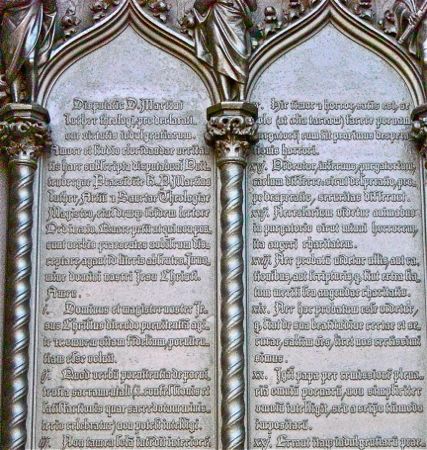 Engraving of the 95 Theses
Engraving of the 95 ThesesIt is called the Castle Church because it is part of a church-castle complex.
The castle tower rises high above Wittenberg and you can climb the winding stone stairs for a great view of the town. Open daily from noon to 4:00. On the Schlossplatz, at the end of Schlossstrasse.
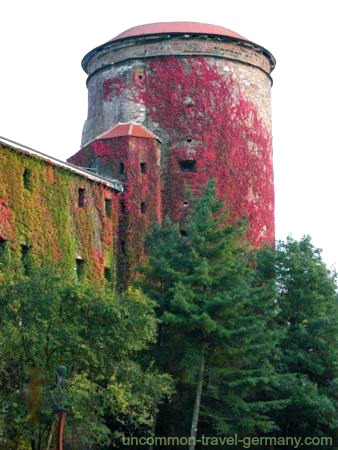 Wittenberg Castle
Wittenberg CastleSomething cool: English services will be conducted at either the Castle Church or the Town Church, Wednesday through Saturday.
You will be able to sing Luther's most famous hymn, A Mighty Fortress is Our God in English, in the church where he sang it. The hymn is sung at every English-language service. Check for scheduling on the website: www.wittenberg-english-ministry.com.
Enjoy a beautiful version of
A Mighty Fortress...
Town Church
This is a lovely old church (the Stadtkirche), very large, with its double towers reaching high above the town. It is just behind the Markt on Kirchplatz.
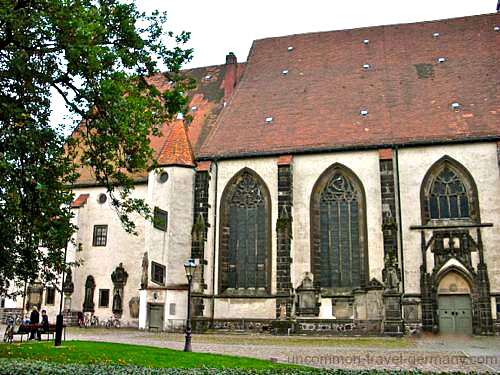 The Town Church, or Stadtkirche
The Town Church, or StadtkircheMartin Luther preached many sermons in this church, and he and Katharina von Bora were married here. Their marriage is re-enacted annually in a popular festival. All of his children were baptized in the church.
A large painting by Lucas Cranach the Elder is above the altar showing Luther receiving the cup at the Last Supper.
Martin Luther's Residence
One of the first buildings on the left on Collegienstrasse as you enter the old town is the large cloister that Martin Luther used as a home.
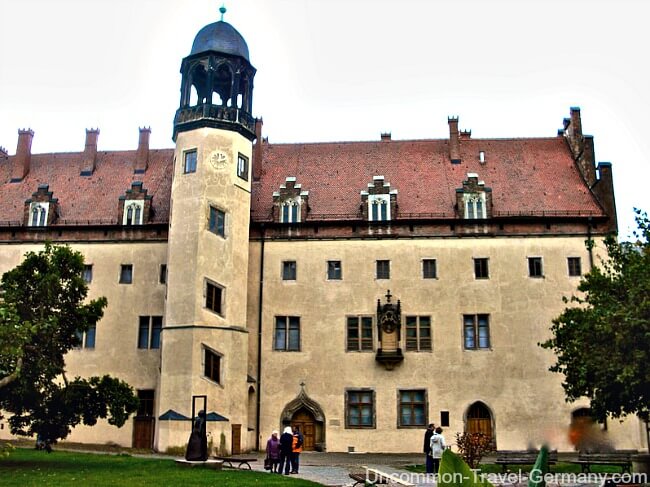 Martin Luther's Home
Martin Luther's HomeThe Luther family, wife and six children, and various students and visitors lived in the central part of the building. He was given the building by one of the aristocrats supporting his movement.
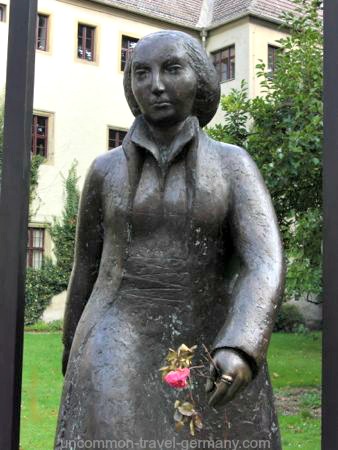 Luther's Wife, Katharina von Bora
Luther's Wife, Katharina von BoraThe building is now a museum, open daily, and maintains Luther's living rooms in their original state. This is where Luther sat with his family and friends in the evenings, discussing a wide range of subjects from the sublime to the earthy (yes, earthy, not earthly!)
Martin Luther was known for his rather blunt way of speaking as well as for his eloquence. Students were allowed to be present during these evening discussions; they took notes and later published thousands of his comments in a book called "Table Talk". To read a sampling of his sayings, see Martin Luther Quotes.
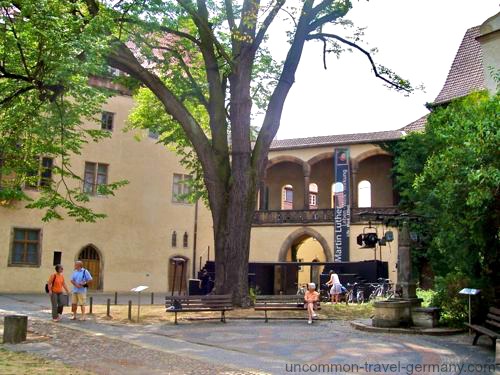 Museum Entrance, Luther's Residence
Museum Entrance, Luther's ResidenceInside the museum are some interesting artifacts from that period, including one of the chests used for collecting money for indulgences, an "indulgence" letter itself, and the pulpit that Martin Luther used for preaching.
Lucas Cranach's fascinating painting of the Ten Commandments is located on wood panels in the refectory of Martin Luther's home. The Wicked Deeds are presented quasi-cartoon style for the faithful to ponder.
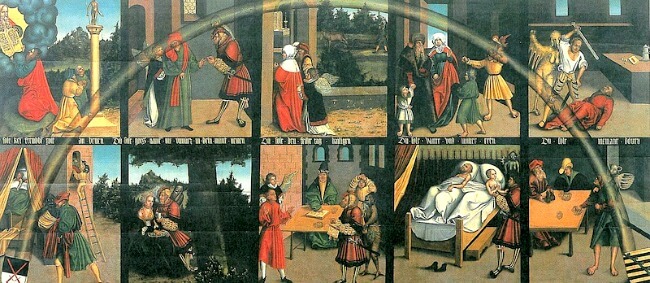 The Ten Commandments, Lucas Cranach
The Ten Commandments, Lucas CranachLucas Cranach's House
Lucas Cranach the Elder painted many of the well-known figures of the Reformation, as well as the local princes and princesses, and his paintings, drawings and woodcuts are in museums all over Europe.
His house on Collegienstrasse is now a museum and his artist studio behind the house has some interesting exhibits.
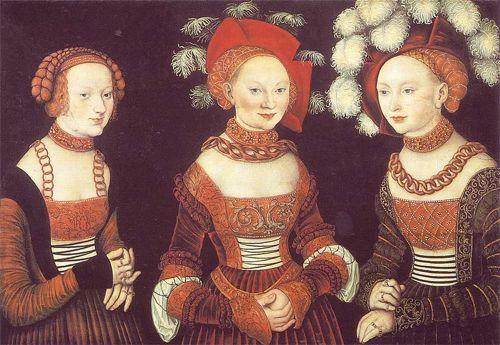 Saxon Princesses, Lucas Cranach the Elder, 1535
Saxon Princesses, Lucas Cranach the Elder, 1535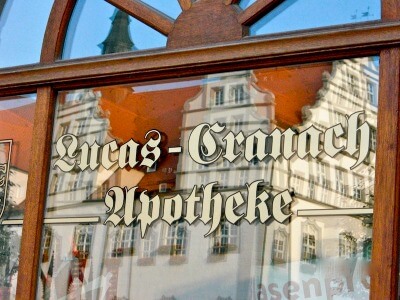
Cranach was not only one of the most accomplished and prolific painters of the 16th century, he was also the mayor of Wittenberg and owned a pharmacists shop that is still doing business as a pharmacy (or Apotheke) in Wittenberg!
Luther's Oak
In 1520, Martin Luther's supporters piled up a stack of writings of Church doctrine and set them on fire. Luther threw in the Papal Bull, the document threatening him with excommunication unless he recanted his writings.
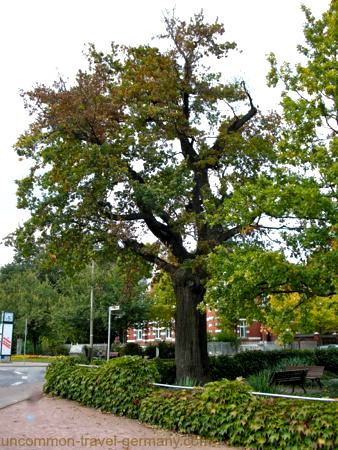 Luther's Oak
Luther's OakIn 1830, an oak tree was planted on the spot where all this allegedly took place. The tree is at the corner of Am Hauptbahnhofstrasse and Collegienstrasse on the way in from the train station, just before you enter the old town.
Wittenberg Tours
English tours: the Tourist Office can arrange English tours for groups, but the regular daily tours are in German. They do have do-it-yourself audio tours in English for rent. In addition, they have a "cell phone tour", where you call a certain number and extension at each sight, and hear information about it in English, for only a connection fee. More info on English tours.
Tour for 2025: Lutheran Heritage Tour. This is a comprehensive, 10 day tour of Luther's places (Wittenberg, Eisleben, Erfurt, Gotha, Eisenach, and Wartburg Castle), combined with a Rhine River Cruise, visits to Rothenburg, Heidelberg, Worms, Mainz, and Frankfurt.
Given by the director of the Wittenberg English Ministry. September 12-22, 2025.
See Lutheran Heritage Tour for details and booking.
Wittenberg Festivals
Medieval Faires
Twice a year the town of Wittenberg turns into a medieval village, with music, costumes, hearty peasant fare, plenty of wine and beer, and medieval dancing, juggling and processions.
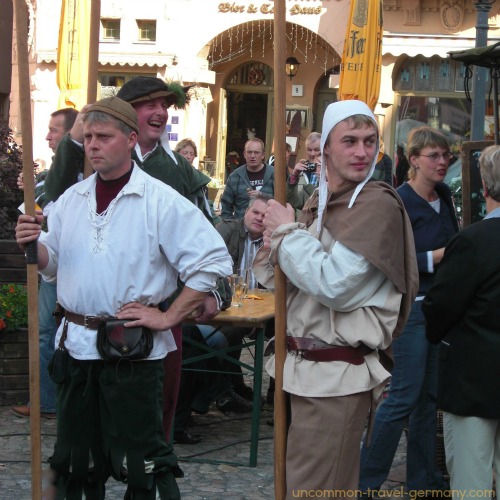 Wittenberg Faire
Wittenberg Faire- Luthers Hochzeit, or Luther's Wedding, is a celebration based on the wedding of Luther and Katharina von Bora which takes place in June each year.
- The Reformations Fest is another Medieval Faire, with additional classical concerts, plays, seminars and special church services. This takes place for several days around October 31 every year (the date the 95 Theses were nailed up).
There is also an annual Pottery Fair in September, where local potters display their wares in the main square.
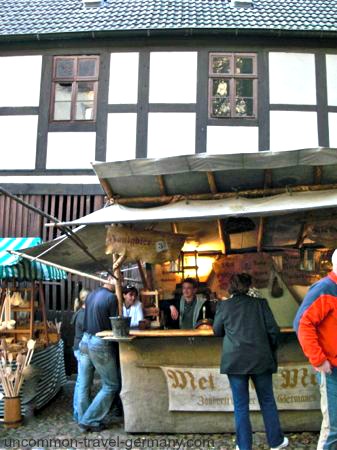 Pottery Faire
Pottery FaireWittenberg University
There has been a university here since Martin Luther's time, located on Collegienstrasse. Parts of the structure date back to that period, and Luther himself worked within these walls. Quotations of his are displayed on the walls in the entrance hall.
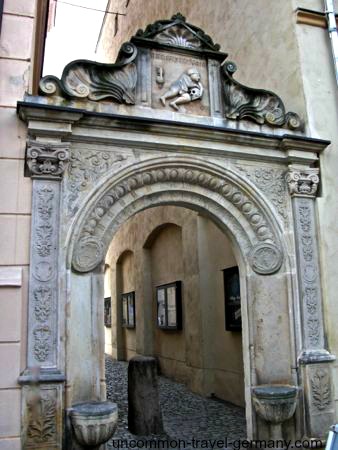 Entrance to the University
Entrance to the UniversityTravel Tips
Hotels in Wittenberg
Note: I may earn a small commission if you make a purchase through some of the links on this page, at no extra cost to you. This helps me provide all the free information I post on this website. Thank you for your support!
There are several charming, older hotels in the heart of the old town, conveniently located and loaded with ambiance:
- Hotel Brauhaus Wittenberg, located on the Markt, is an actual brewery, as well as a hotel and a beer garden. They say Martin Luther himself was a regular in their tavern, the Goldener Adler. www.brauhaus-wittenberg.de More info and booking.
- Schwarzer Baer, at Schlossstrasse 2, www.stadthotel-wittenberg.de. More info and booking.
- Alte Kanzley, Schlossplatz 3-5. www.alte-canzley.de. More info and booking.
Travel to Wittenberg
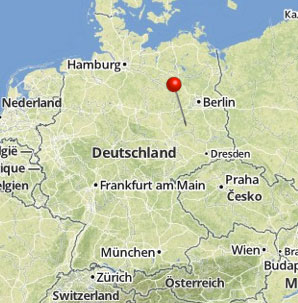 Wittenberg
WittenbergWittenberg is located on the Elbe River in eastern Germany, 62 miles (100km) southwest of Berlin and it's about one hour by train from both Berlin and Leipzig.
The train station is just to the east of the old town, about a ten minute walk. If you come by train, take a left on the street in front of the station (Am Hauptbahnhofstrasse) and follow that until the street ends near a traffic circle. See maps below.
The famous oak tree is to the right of the circle. Turn right and you will be on the main street of the old town, Collegienstrasse. Most of the main sights are on this street. The Castle Church (Schlosskirche) is at the far end, and you will pass Luther's house, the old University, Melanchthon and Cranach's houses and the Markt. The Town Church (Stadtkirche) is on the parallel street, Mittelstrasse. It has enormous towers; you can't miss it.
Map of Wittenberg
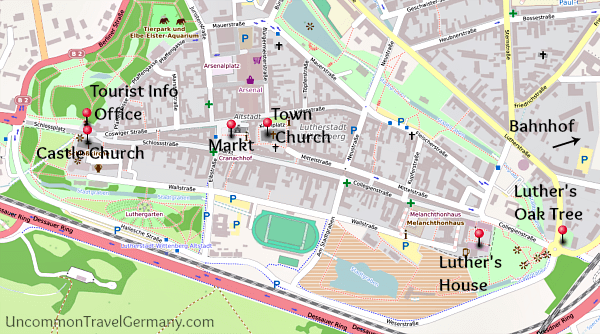
Map data (c) OpenStreetMap and contributors, CC-BY-SA
More Martin Luther...
- Home ›
- Martin Luther ›
- Wittenberg
Share this page:
